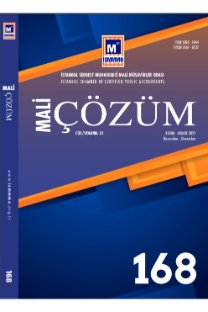Kontrol öz değerlemesi
Bu çalışmanın amacı, işletme yönetimi tarafından tesis edilen iç denetim yapısının işletme tarafından kontrol öz değerleme yaklaşımı ile iç denetim mesleğine değer katan tekniğini açıklamaktır. İşletmeler fiziki olarak büyüdükçe, faaliyetlerin sayısı ve karmaşıklığı arttıkça yönetimin işletme faaliyetlerini doğrudan doğruya kontrol etme imkanı azalmaktadır. İşletme yönetimi açısından ortaya çıkan bu olumsuz gelişme, ancak etkin bir iç kontrol sistemi kurularak ve bu sistemi iç denetim bölümüne denetleterek giderilebilir. İç Kontrol, etkinliği sayesinde uygulanabilen ve değerlendirilebilen bir süreçtir. Kontrol öz değerleme yaklaşımında amaç, karşılaşılabilecek tüm işletme amaçlarına uygun bir güvence sağlamaktır.
Control self assessment- CSA
The purpose of this study is to explain the technique of internal audit structure established by the business management that adds value to the internal audit profession with self-assessment approach by the business itself. As the business enterprises grow physically, and as the number and complexity of the activities increases, the opportunity of the management to directly control the operation activities decreases. This negative development for the business management can only be remedied by establishing an effective internal control system and having this system audited by internal audit department. Internal Control is a process that can be applied and assessed with its efficiency. And the purpose of self-assessment is to provide an assurance that is appropriate for all possible business purposes.
___
“Control Self-Assesssment: A new approach to auditing”(2000). Ivey Business Journal (2000).Anıl, Duygu (2006), Kontrol Öz Değerlendirme ve İşletmelerin İç Kontrol Yapısının Tespitine Yönelik Bir Araştırma, (Yayımlanmış Doktora Tezi) İstanbul, Marmara Üniversitesi
Anıl, İbrahim (2000). Yönetim Kontrol Temel ve Teknikleri. İstanbul : Beta Yayınevi
Baker, Lary, Graham, Rodger (1996), “Control Self-Assessment” , Internal Auditor. 53, 2 (1996)
Bjelke, Stein I., Nilsson, Kjell M. (1997), “Automating The Self” Assessment, Internal Auditor 4 (1997)
Can, H., Tuncer, D., Ayhan, D. (1991). Genel İşletmecilik Bilgileri. Ankara : Adım Yayıncılık
Champlain, Jack J. (2007). Auditing Information System. [y.y.] : John Wiley & Sons
Committee on Auditing Procedure: Internal Control – Elements of Coordinated System And Its Impotrance to Management And The Independent Public Accountants, New York – AICPA, 1992
Figgs, Jonathan (1999),“The Power of CSA”, The Internal Auditor, (Aug 1999)
Hawkins Kyleen, Huckaby, Bill (1998) “Using CSA to implement COSO” Internal Auditor, (June 1998)
http://csaprofessionals.com/Whatis%20CSA.htm, 2009 [çevrimiçi erişim]
http://niyazikurnaz.net 2009 [çevrimiçi erişim]
http://www.optiontechnologies.com/applications/apps_csa.asp, Control Self Assessment / Enterprise Risk Management, 2009[çevrimiçi erişim]
http://www8.georgetown.edu/admin/svp/ia/control.html, Control Self - Assesment Questionnaire, 2009 [çevrimiçi erişim]
Hubbard Larry, December (2000). Control Self Assessment: A Practical Guide. [y.y.] : The Instute of Internal Auditors.
McCuaig, Bruce (1998) “Auditing, Assurance, & CSA”, The Internal Auditor (June 1998)
McNamee, David. “Control and Risk Self Assessment”
McNamee, David., “Back to the Future with Control Self Assessment”, [çevrimiçi erişim] http://www.mc2consulting
Melville Robert, Hafen Michael (2006), Control Models and Control Self Assesment: Results Of A Survey of the IIA CSA Center USA : Kluwer Academic Publishers Norwell
Mitchell, John (2009), “Control Self Assesment”, www.isaca-london.org , Lhs Business Control, 2009 [çevrimiçi erişim]
Türedi, Hasan (2000). Denetim. Trabzon : Celepler Matbaacılık
Wade Keith, Wynne Andy, December (2000). Control Self Assessment: For Risk Management and Other Practical Applications. [y.y.] : [yayl.y.]
- ISSN: 1303-5444
- Yayın Aralığı: Yılda 6 Sayı
- Başlangıç: 1991
- Yayıncı: İstanbul Serbest Muhasebeci Mali Müşavirler Odası
